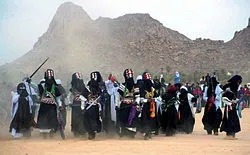The Tuareg people (/ˈtwɑːrɛɡ/; also spell Twareg or Touareg) are a large Berber ethnic confederation. They principally inhabit the Sahara in a vast area stretching from far southwestern Libya to southern Algeria, Niger, Mali and Burkina Faso. Traditionally nomadic pastoralists, small groups of Tuareg are also found in northern Nigeria.
The Tuareg speak the Tuareg languages (also known as Tamasheq), which belong to the Berber branch of the Afroasiatic family.
The Tuaregs have been called the "blue people" for the indigo-dye coloured clothes they traditionally wear and which stains their skin. A semi-nomadic Muslim people, they are believed to be descendants of the Berber natives of North Africa.The Tuaregs have been one of the ethnic groups that have been historically influential in the spread of Islam and its legacy in North Africa and the adjacent Sahel region.
Tuareg society has traditionally featured clan membership, social status and caste hierarchies within each political confederation.The Tuareg have controlled several trans-Saharan trade routes and have been an important party to the conflicts in the Saharan region during the colonial and post-colonial era.
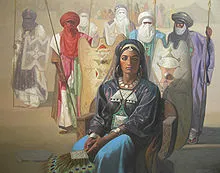

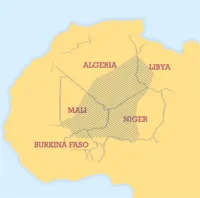
Tuareg culture is largely matrilineal. Tuareg women have high status compared with their Arab counterparts (see matrilineality). Other distinctive aspects of Tuareg culture include clothing, food, language, religion, arts, astronomy, nomadic architecture, traditional weapons, music, films, games, and economic activities.!
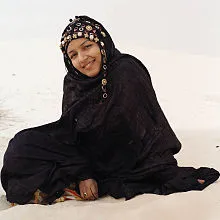
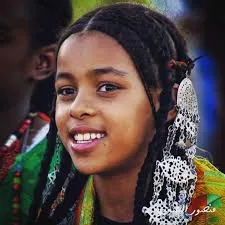
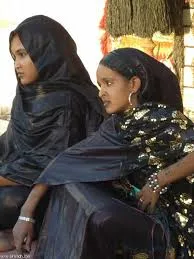
In Tuareg society women do not traditionally wear the veil, whereas men do. The most famous Tuareg symbol is the Tagelmust (also called éghéwed and litham), referred to as a Cheche (pronounced "Shesh"), an often indigo blue-colored veil called Alasho. The men's facial covering originates from the belief that such action wards off evil spirits. It may have related instrumentally from the need for protection from the harsh desert sands as well. It is a firmly established tradition, as is the wearing of amulets containing sacred objects and, recently, verses from the Qur'an. Taking on the veil is associated with the rite of passage to manhood; men begin wearing a veil when they reach maturity. The veil usually conceals their face, excluding their eyes and the top of the nose.
The Tuareg are sometimes called the "Blue People" because the indigo pigment in the cloth of their traditional robes and turbans stained their skin dark blue. The traditional indigo turban is still preferred for celebrations, and generally Tuareg wear clothing and turbans in a variety of colors.
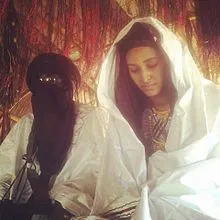

Traditional Tuareg music has two major components: the monochord violin anzad played often during night parties and a small tambour covered with goatskin called tende, performed during camel and horse races, and other festivities. Traditional songs called Asak and Tisiway (poems) are sung by women and men during feasts and social occasions. Another popular Tuareg musical genre is takamba, characteristic for its Afro percussions.
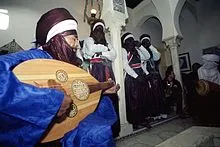
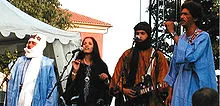
agest: dance made while seated, moving the head, the hands and the shoulders.
ewegh: strong dance performed by men, in couples and groups.
agabas: dance for modern ishumar guitars: women and men in groups.
In the 1980s rebel fighters founded Tinariwen, a Tuareg band that fuses electric guitars and indigenous musical styles. Tinariwen is one of the best known and authentic Tuareg bands. Especially in areas that were cut off during the Tuareg rebellion (e.g., Adrar des Iforas), they were practically the only music available, which made them locally famous and their songs/lyrics (e.g. Abaraybone, ...) are well known by the locals. They released their first CD in 2000, and toured in Europe and the United States in 2004. Tuareg guitar groups that followed in their path include Group Inerane and Group Bombino. The Niger-based band Etran Finatawa combines Tuareg and Wodaabe members, playing a combination of traditional instruments and electric guitars.
Many music groups emerged after the 1980s cultural revival. Among the Tartit, Imaran and known artists are: Abdallah Oumbadougou from Ayr, Baly Othmany of Djanet.
